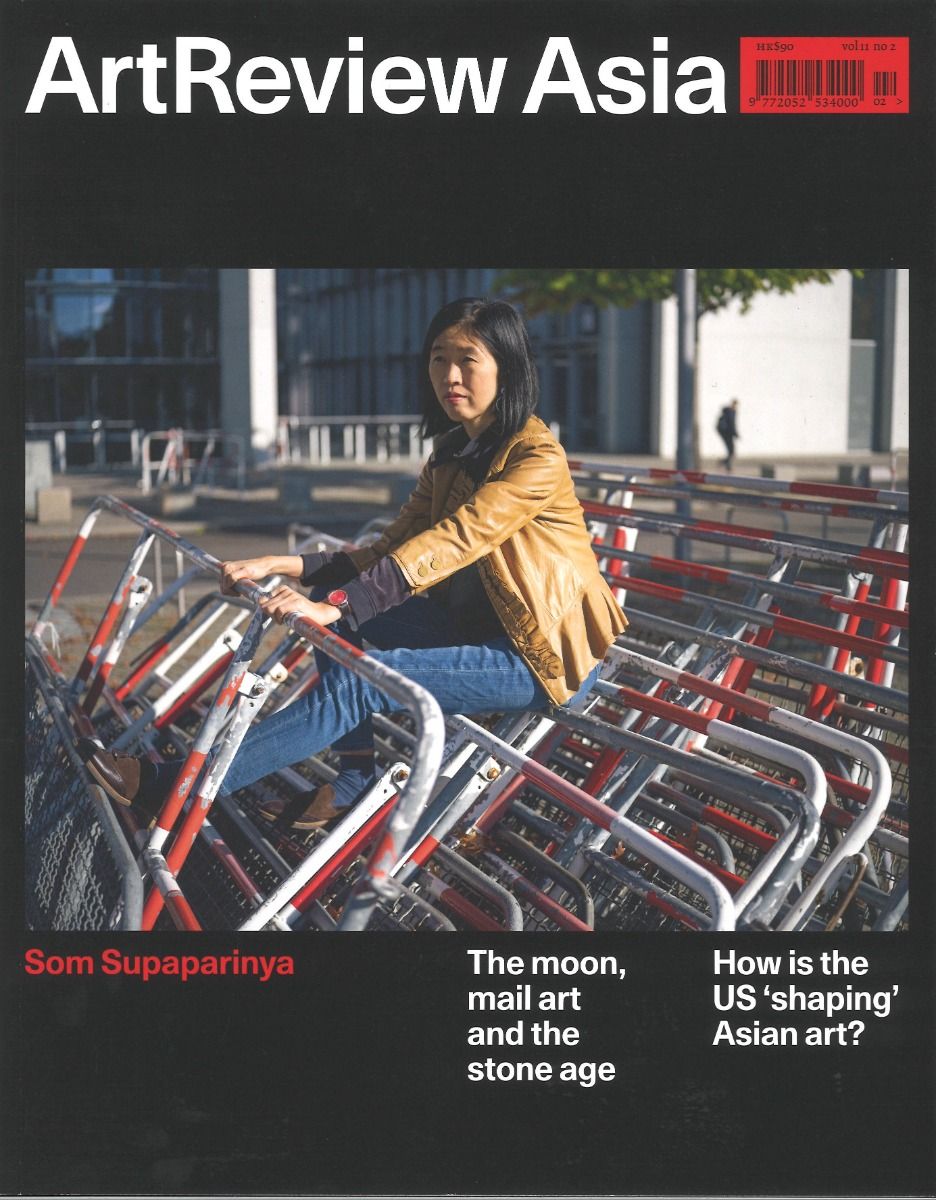Art Review Asia Vol.11 No. 2
$12
Featuring Som Supaparinya, Lee Ufan and Claude Viallat, Horikawa Michio; columns on the National Museum of Asian Art’s 100-year anniversary and museum entrances; previews, reviews and more
In the Summer issue of ArtReview Asia, Som Supaparinya turns her lens to her homeland, documenting life impacted by environmental exploitation and geopolitics. Max Crosbie-Jones writes about Supaparinya’s filmwork, including Two Sides of the Moon (2021), that centres on life by the Pak Num Dam on the Mun River. In this two-channel installation, Supaparinya engages with local fisherfolk who mourn the ecological devastation and its impact on their livelihood. However, Crosbie-Jones writes, this ethnographic bent isn’t ‘extraordinary’ in this sense; rather the ‘potency… rests largely upon its placid yet critically engaged powers of visual description: a sensorial approach that renders conscious the Mun’s temporal rhythms and a mosaic of ontological entanglements, as well as its disequilibrium.’
On the occasion of the National Museum of Asian Art’s 100-year anniversary, Marv Recinto pauses amid the kimchi-making and Bollywood-dancing festivities to ask, whose idea of Asia is this? Recinto argues that the institution – comprised of the distinctly non-Asian sounding Freer Gallery of Art and Arthur M. Sackler Gallery – seems to think of the world’s largest continent as a projection of old Euro-American stereotypes, only involving Asian people for their performativity. ‘During this critical moment of American cultural history,’ she writes, ‘when identity politics and racial systems of power are being questioned, the National Museum of Asian Art is missing an important opportunity to think critically about itself and the Western-centric understanding of Asia it continues to perpetuate.’
Longtime friends, Lee Ufan and Claude Viallat speak to Mark Rappolt ahead of their first two-person show together at Pace Gallery London, Encounter. The leading postwar figures played pivotal roles in the Mono-ha and Supports/Surfaces movements in Asia and Europe respectively. However, in spite of their cultural specificity, the pair had developed parallel approaches to artmaking. Together, they discuss materiality, repetition and friendship.
Horikawa Michio spent decades shipping stones to people. Fellow artists, critics and even political figures like then-Japanese Prime Minister, Eisaku Satō, received these rocks as part of Michio’s lifelong project, Mail Art by Sending Stones. Tyler Coburn chronicles the Japanese artist’s geological practice, identifying the temporal specificity that makes the work so distinguishable.
Details
- Format: Paperback
- Pages: 106
- Date: July 2023
Shipping
You have three shipping options at checkout:
- Best Way: Your order will ship within two business days via UPS or USPS priority or first class, depending on the size and weight of your package.
- 2-Day Express: Your order will ship the following business day via FedEx or UPS 2-Day Express.
- In-store Pickup: Add items to your cart and proceed to checkout – there, select Local Pickup in Shipping Options. Once your order is ready to be picked up, you will be notified by email.
Once all of your items are ready for pickup and you've received your Ready for Pickup notification (remember: don't come to the store unless you've received this).
To collect your in-store pickup order once you have received the "Ready for Pickup" notification, please come to the Shop (located in the main lobby off Vineland Place) during the Walker Art Center's open hours. We are currently unable to do curbside pickup.
Shipping rates depend on the selected shipping speed and weight/size of the items. Please allow several days for your order to be processed and shipped.
If you have any additional questions please contact shop@walkerart.org.



